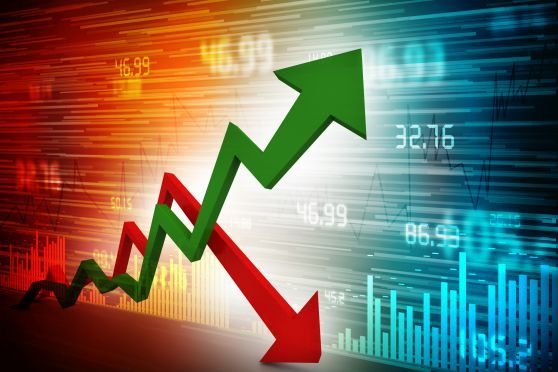The stock exchange has long been a cornerstone of global finance, serving as a marketplace where stocks, bonds, and other securities are bought and sold. Over the centuries, stock exchanges have undergone significant transformations, evolving from chaotic trading floors to sophisticated electronic platforms. This article traces the historical development of stock exchanges, examining the transition from floor trading to electronic trading and the implications of these changes for the financial markets.
The Origins of Stock Exchanges
Early Beginnings
The concept of stock trading dates back to ancient civilizations, but the first true stock exchange was established in Amsterdam in 1602. The Dutch East India Company issued shares to the public, allowing investors to buy and sell their stakes in the company. This innovation laid the groundwork for modern stock exchanges, providing a structured marketplace for trading securities.
The Rise of Formal Exchanges
Following the establishment of the Amsterdam Stock Exchange, other European cities soon followed suit. The London Stock Exchange (LSE) was founded in 1801, becoming one of the world’s most influential financial institutions. In the United States, the New York Stock Exchange (NYSE) was established in 1792, growing to become the largest stock exchange in the world.
The Birth of Floor Trading
In the early days, stock trading was conducted in informal settings, such as coffee houses and public squares. As trading volumes increased, dedicated trading floors were established to provide a centralized location for buyers and sellers to meet. These trading floors became the bustling epicenters of financial activity, characterized by the frenetic shouting and gesturing of traders.
The Era of Floor Trading
The Mechanics of Floor Trading
Floor trading, also known as open outcry trading, involves traders physically present on the trading floor, using hand signals and verbal communication to execute trades. Traders, known as floor brokers or market makers, gather around trading posts or pits, where they negotiate prices and complete transactions.
The Role of Specialists and Market Makers
Specialists and market makers play a crucial role in floor trading by ensuring liquidity and order in the market. Specialists, assigned to specific stocks, are responsible for maintaining fair and orderly markets by matching buy and sell orders. Market makers, on the other hand, provide liquidity by buying and selling securities from their own accounts, facilitating smooth trading.
The Advantages and Challenges of Floor Trading
Floor trading has several advantages, including the ability to handle large orders, the potential for price improvement through negotiation, and the immediacy of executing trades. However, it also has significant challenges, such as the potential for human error, limited trading hours, and the physical constraints of the trading floor.
The Advent of Electronic Trading
The Emergence of Electronic Communication Networks (ECNs)
The rise of technology in the late 20th century paved the way for electronic trading. Electronic Communication Networks (ECNs) emerged as alternative trading platforms, allowing investors to trade directly with one another without the need for a physical trading floor. ECNs matched buy and sell orders electronically, providing greater efficiency and transparency.
The Transition to Electronic Trading Platforms
By the 1990s, major stock exchanges began transitioning to electronic trading platforms. The Nasdaq Stock Market, founded in 1971, was one of the first exchanges to adopt electronic trading. Unlike traditional exchanges, Nasdaq operated entirely through a computerized network, enabling real-time trading and eliminating the need for a physical trading floor.
The Phasing Out of Floor Trading
As electronic trading gained popularity, traditional exchanges like the NYSE and LSE gradually phased out floor trading. The NYSE introduced its hybrid market model in 2006, combining electronic trading with floor trading. However, the dominance of electronic trading eventually led to the decline of floor trading, with most exchanges now operating primarily through electronic platforms.
The Benefits of Electronic Trading
Increased Efficiency and Speed
One of the primary advantages of electronic trading is increased efficiency and speed. Electronic platforms can process thousands of transactions per second, significantly reducing the time it takes to execute trades. This speed is crucial in today’s fast-paced financial markets, where prices can change rapidly.
Enhanced Transparency and Accessibility
Electronic trading platforms provide greater transparency by displaying real-time price quotes and order book information. This transparency allows investors to make more informed decisions and promotes fairer markets. Additionally, electronic trading has democratized access to the stock market, enabling individual investors to trade alongside institutional players.
Reduced Costs and Lower Barriers to Entry
Electronic trading has significantly reduced the costs associated with trading. Without the need for physical trading floors and human intermediaries, transaction costs have decreased, making trading more affordable. Lower barriers to entry have also encouraged more participation in the stock market, contributing to greater liquidity and market depth.
Algorithmic and High-Frequency Trading
The advent of electronic trading has given rise to algorithmic and high-frequency trading (HFT). Algorithmic trading involves using computer algorithms to execute trades based on predefined criteria, such as price movements and market conditions. HFT, a subset of algorithmic trading, involves executing a large number of trades in fractions of a second to capitalize on small price discrepancies.
The Challenges of Electronic Trading
Market Fragmentation
The proliferation of electronic trading platforms has led to market fragmentation, where trading activity is spread across multiple venues. While this fragmentation can increase competition and reduce costs, it can also create challenges in terms of price discovery and liquidity. Investors may need to navigate multiple platforms to find the best prices, and liquidity may be dispersed across different venues.
Technological Risks and Cybersecurity
The reliance on technology in electronic trading introduces new risks, such as system failures, data breaches, and cyberattacks. Exchanges and market participants must invest in robust cybersecurity measures to protect against these threats. Additionally, technological glitches or “flash crashes” can disrupt trading and cause significant market volatility.
Regulatory and Compliance Issues
The shift to electronic trading has necessitated changes in regulatory frameworks to address new challenges. Regulators must ensure that electronic trading platforms operate fairly and transparently, and that market participants comply with rules designed to prevent market manipulation and protect investors. Striking the right balance between innovation and regulation is an ongoing challenge.
The Future of Stock Exchanges
The Rise of Decentralized Exchanges (DEXs)
As blockchain technology advances, decentralized exchanges (DEXs) are emerging as a new frontier in the evolution of stock exchanges. DEXs operate on decentralized networks, allowing peer-to-peer trading without intermediaries. This model offers greater transparency, security, and control for investors, but also presents regulatory and scalability challenges.
Artificial Intelligence and Machine Learning
Artificial intelligence (AI) and machine learning are poised to further transform stock exchanges. These technologies can analyze vast amounts of data, identify patterns, and make predictions, enhancing trading strategies and market efficiency. AI-powered trading systems can adapt to changing market conditions in real-time, potentially improving trading outcomes.
Sustainable and Impact Investing
As investors increasingly prioritize environmental, social, and governance (ESG) factors, stock exchanges are evolving to support sustainable and impact investing. Exchanges are introducing new products and services, such as green bonds and ESG indices, to cater to this growing demand. This shift reflects a broader trend towards responsible investing and corporate accountability.
The Role of Data and Analytics
Data and analytics are becoming central to the operation of stock exchanges. Advanced analytics can provide deeper insights into market trends, investor behavior, and trading patterns. Exchanges are leveraging data to enhance their services, improve risk management, and offer more personalized experiences to market participants.
Case Studies: The Transformation of Major Stock Exchanges
The New York Stock Exchange (NYSE)
The NYSE, the world’s largest stock exchange, has undergone significant changes over its history. From its origins in 1792 as a physical trading floor, the NYSE has embraced technology to remain competitive. The introduction of the hybrid market model in 2006 marked a major shift towards electronic trading, allowing for greater speed and efficiency while maintaining the human element of floor trading. Today, the NYSE operates primarily as an electronic exchange, but it retains its iconic trading floor as a symbol of its heritage.
The Nasdaq Stock Market
Nasdaq, founded in 1971, was the first stock exchange to operate entirely through electronic trading. This innovation positioned Nasdaq as a leader in technology and finance, attracting high-growth companies in sectors such as technology and biotechnology. Nasdaq’s fully electronic platform allows for rapid trade execution and real-time market data, making it a preferred choice for tech-savvy investors and traders. Nasdaq’s commitment to innovation continues, with ongoing developments in areas such as blockchain and AI.
The London Stock Exchange (LSE)
The LSE, established in 1801, has evolved from a traditional floor trading exchange to a global financial powerhouse. The transition to electronic trading began in the late 20th century, with the introduction of the Stock Exchange Automated Quotation (SEAQ) system. The LSE has since developed its electronic trading capabilities, offering a wide range of financial products and services to international investors. The LSE’s acquisition of Refinitiv, a financial data provider, underscores its focus on leveraging data and analytics to enhance its offerings.
The evolution of stock exchanges from floor trading to electronic trading represents a profound transformation in the financial markets. This journey has been marked by significant advancements in technology, changes in market structure, and the introduction of new trading strategies. While electronic trading has brought numerous benefits, including increased efficiency, transparency, and accessibility, it also presents challenges that require ongoing attention from regulators and market participants.
As we look to the future, the continued integration of emerging technologies such as blockchain, AI, and machine learning will shape the next phase of stock exchange evolution. Decentralized exchanges, sustainable investing, and the growing importance of data and analytics are just a few of the trends that will influence the direction of financial markets. By understanding the history and dynamics of stock exchange evolution, investors and market participants can better navigate the complexities of today’s financial landscape and capitalize on the opportunities that lie ahead.
ALSO READ: Free Stock Market Courses for August 2024




